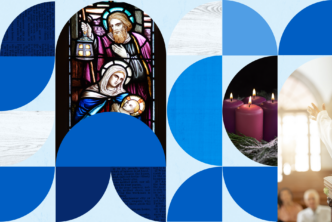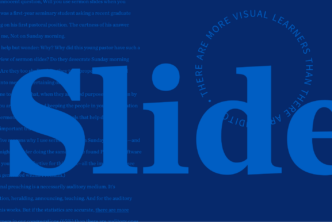You will preach narrative far better if you know this literary archetype.
The Bible is full of stories, and most of them revolve around a hero. From Abraham to Moses to Deborah to the True and Better Hero, much of Scripture is a hero’s journey.
Which means every preacher needs to understand the literary archetype of the hero.
This excerpt from Leland Ryken’s How Bible Stories Work: A Guided Study of Biblical Narrative—free this month—offers a definition of a hero story and questions to analyze what the story means and how it relates to audiences today.
***
Toward a Definition of Hero Story
A hero story is a story built around a central protagonist who is held up for admiration. There are many additional nuances that need to be added, but the central concept is simple. The main focus of a hero story is the character and exploits of the hero.
How important are hero stories? The answer is that most stories are hero stories. The genre of narrative is thus almost synonymous with the subgenre of hero story. Furthermore, the impulse behind hero stories is synonymous with the impulse behind literature itself—to give expression and shape to our own experiences. The fact that we hear so little about the genre of hero story is evidence of a great abdication. In not being initiated into the genre of hero story, the Bible reading public has been deprived of one of its greatest resources.
If a hero story is defined by the focus of the action on a central hero, the important further question is what a hero is. Here are the defining traits of a literary hero:
- A hero is the protagonist or leading character in a story. We can legitimately use the adjective “heroic” for an exemplary minor character, but such a character is not the hero of the story. A literary hero is the protagonist of a story.
- The hero is representative. Heroes embody the experiences, conflicts, and struggles of the culture or group producing them. Heroes might be so universal as to represent virtually the entire human race, or they might represent a specific group or subculture.
- A hero not only represents the experiences of a culture or group but also embodies the values of that group. A hero story thus codifies what an author and audience believe and try to practice. We can thus call the hero an exemplary figure—someone who serves as an example to follow and emulate in our own lives.
- As an extension of that, it is a ground rule of hero stories that these stories not only present a certain kind of character but also answer the implied question of what constitutes heroic action. Hero stories answer the question of what constitutes the good life and the proper way of living.
- In view of this, a hero is a generally idealized character who embodies an ideal. Heroes and heroines need not be wholly idealized (good and admirable), but they are largely so. If they are not, we should not call them heroes and heroines.
- A hero possesses qualities that capture people’s imaginations. One of the functions of heroes is to serve as an inspiration, so we can legitimately ask in what ways we find a hero or heroine inspiring.
It is important to realize that real life does not produce a hero as just defined. Real life gives us the materials from which heroes can be constructed. A literary hero is always the product of an author’s selectivity and molding. Some real-life materials are omitted during the process of authorial selectivity. We can say that a storyteller distills some aspect of a character and presents that to us in heightened form.
The Methodology for Analyzing a Hero Story
The methodology for analyzing a hero story comes straight from the definition that has been presented above. In fact, we can turn the definition of a literary hero into a series of questions to ask and answer from the text, as follows:
- What experiences, conflicts, and struggles does the hero enact?
- As seen in the hero’s character and actions, what represents the right way to live? What values does the story offer for approval? What constitutes heroic action?
- Knowing that a hero is usually a combination of positive and negative traits (but always with the former the dominant element), what character traits does the story encourage us to emulate and what negative traits are offered as errors to avoid?
- What traits of the hero capture the popular imagination? What do we find inspiring about a hero or heroine?
These questions are good ones to have in our awareness as we move through a hero story.
They can also guide us when we stand back from a hero story as a whole and organize our final thoughts on it.
***
Ryken’s questions are fantastic, but permit me to add a few more questions and prompts:
- If you are studying a text with a hero in it, ask: How is this hero like Christ? How are they different? In what ways is Christ superior?
- When preaching a hero-based text, consider how you can organize the sermon and what themes you can draw out. For example, you may organize it by conflict, rising action, climax, and resolution, or by the development of the hero’s character throughout the text.
- Who are some modern figures regularly regarded as heroes? Consider reading their biographies to fill your mind with potential sermon illustrations.
This excerpt is adapted from Leland Ryken, How Bible Stories Work: A Guided Study of Biblical Narrative, Reading the Bible as Literature (Bellingham, WA: Lexham Press, 2015), 101–104.






